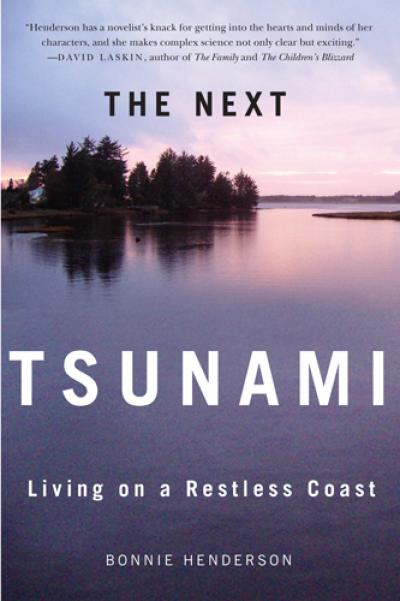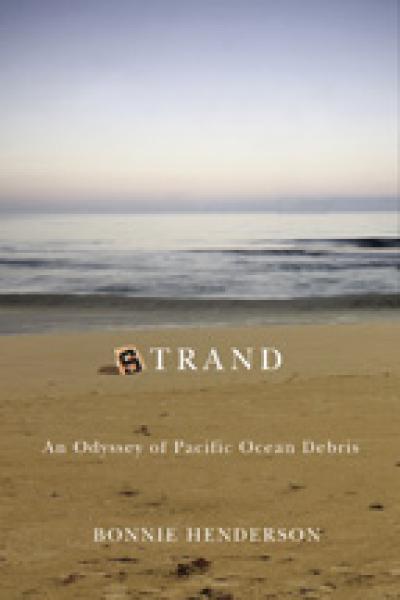Tomorrow, March 27, 2014 is the 50th anniversary of the Good Friday Earthquake: an enormous earthquake off the Alaskan coast—the largest ever recorded in North America—and the tsunami that hit the West Coast of the United States afterward. Bonnie Henderson, whose latest book, The Next Tsunami: Living on a Restless Coast—just out from OSU Press—was described in a recent LA Times book review as “by turns a story of obsession, a geologic mystery and an inquiry into how we deal with disasters — or, more often, don't” joins us to reflect on that anniversary, how best to move forward, and to share rare color snapshots* from the scene in Seaside, Oregon, a day after the tsunami struck 50 years ago. You can also tune in to OPB's Think Out Loud tomorrow at noon to hear more from Bonnie Henderson.
--
Tomorrow, March 27, 2014, marks fifty years since a massive earthquake on the Alaskan coast—at 9.2, the largest ever recorded in North America—generated a tsunami that didn’t just slam the Alaska shoreline but killed people and damaged homes, businesses, and other structures as far south as Crescent City, California.
As geologist Tom Horning—who was asleep in his family’s cottage in Seaside, Oregon, when the tsunami reached the northern Oregon coast and surrounded the cottage like a moat—has said about the not-infrequent tsunami warnings his town receives, “it gets people in Seaside thinking about tsunamis, and that’s a good thing. But it gets people thinking the wrong way.”
Thinking the wrong way about tsunamis—overreacting to warnings of tsunamis coming from far away, then when nothing much happens, tuning out discussions about tsunami preparedness—may ultimately be hazardous to your health and that of your neighbors all along the Pacific Northwest coast.
Plate tectonics is a complicated subject, and a relatively new theory. The term “plate tectonics” didn’t appear in print until 1969; back in 1964, any scientist who took it seriously was considered something of a crackpot by most of his colleagues. But it takes just a little understanding of how the plates that compose the Earth’s outer crust grow and slide and collide to understand why the Oregon coast—indeed, the entire Pacific Northwest from Vancouver Island to Eureka, California—has been and will again be struck not just by leftover waves generated by an earthquake from far away but by a local tsunami: series of huge waves from an earthquake just a few dozen miles off our own shoreline, one roughly the size of the quake that surprised Japan on March 11, 2011.
The last time such a quake occurred here was around 9 p.m. on January 26, 1700, when the strain of pressure from the North American plate (the piece of crust under Oregon and Washington) slowly colliding with the offshore Juan de Fuca plate finally gave way, causing the Juan de Fuca plate to suddenly dive under the North American plate. Native people living here experienced that as a huge, five-or six-minute-long earthquake. Fifteen or twenty minutes later, their shoreline villages—every cedar plankhouse, and every person who hadn’t thought to run to high ground, as oral history no doubt suggested they do—was swallowed by the sea.
So what is the right way for people in Seaside—for anyone who lives on or visits or cares about the Pacific Northwest coast—to think about tsunamis?
Denial is one option. There’s no reason to think the next tsunami will happen in your lifetime; it might not strike for hundreds of years. So many other disasters could befall you before then; why worry?
The trouble is, it could happen literally any day. Oregon State University geologist Chris Goldfinger figures there’s about a 12 percent chance of a “full rupture”—shaking the entire 600-mile-long Cascadia Subduction Zone, as the fault line is called—sometime in the next 50 years. He estimates the chances of such a quake on just the southern portion of the fault line in the next half-century at upwards of 43 percent.
Worrying won’t help, nor will seawalls, nor warning sirens: the Big One will immediately knock out power, silencing the sirens. Education can help, particularly of the kind the Oregon Department of Geology and Mineral Industries has provided with its updated tsunami inundation maps: look at the map and know where you’ll go if the earth starts shaking. New bridges, strong enough to remain standing through a magnitude 9 earthquake, are essential in a town like Seaside, with two rivers to cross between the beach and high ground. And visionary leaders are key—people such as Doug Dougherty, superintendent of the Seaside School District, who is seeking support to move one high school, a middle school, and two elementary schools out of the tsunami inundation zone.
Visit any elementary school classroom, ask who likes science, and you’ll see faces light up and arms shoot up. I’ve found the same sense of wonder among the geologists I’ve interviewed: an unabashed enthusiasm for the serendipitous delight of discovery. For the rest of us world-weary adults, an interest in science tends to be driven by worry: about climate change, or pollution, or looming natural disasters. Too much worry, however, and we get overwhelmed and just stop paying attention.
But what is happening beneath our feet right this minute is amazing, marvelous, fascinating: the Earth reshaping and recycling itself, too slowly to observe until, in a flash, everything changes. As a community, we need to take care of business: to take appropriate, effective steps to attempt to minimize loss of life from what will be this country’s biggest-ever natural disaster.
And then let it go. And enjoy the timeless pleasure of a walk on the beach.
—Bonnie Henderson
You can order The Next Tsunami here.
 Journalist Bonnie Henderson is the author of two hiking guidebooks in addition to The Next Tsunami: Living on a Restless Coast and Strand: An Odyssey of Pacific Ocean Debris, which was an Oregon Book Awards finalist and was named one of the Best Books of 2008 by the Seattle Times. She has been a newspaper reporter, an editor at Sunset magazine, and a writer for a number of magazines including Backpacker, Ski, and Coastal Living. She is currently a freelance writer and editor focusing on the natural world. She divides her time between the Oregon coast and her home in Eugene, Oregon. For more information, you can visit Henderson's website here.
Journalist Bonnie Henderson is the author of two hiking guidebooks in addition to The Next Tsunami: Living on a Restless Coast and Strand: An Odyssey of Pacific Ocean Debris, which was an Oregon Book Awards finalist and was named one of the Best Books of 2008 by the Seattle Times. She has been a newspaper reporter, an editor at Sunset magazine, and a writer for a number of magazines including Backpacker, Ski, and Coastal Living. She is currently a freelance writer and editor focusing on the natural world. She divides her time between the Oregon coast and her home in Eugene, Oregon. For more information, you can visit Henderson's website here.
*The images, which show the same house from two different angles, are courtesy of Tom Horning.
Related Titles

The Next Tsunami
On a March evening in 1964, ten-year-old Tom Horning awoke near midnight to find his yard transformed. A tsunami triggered by Alaska’s momentous Good Friday...

Strand
In Strand, travel writer and amateur naturalist Bonnie Henderson traces the stories of wrack washed up on the mile-long stretch of Oregon beach she walked...
